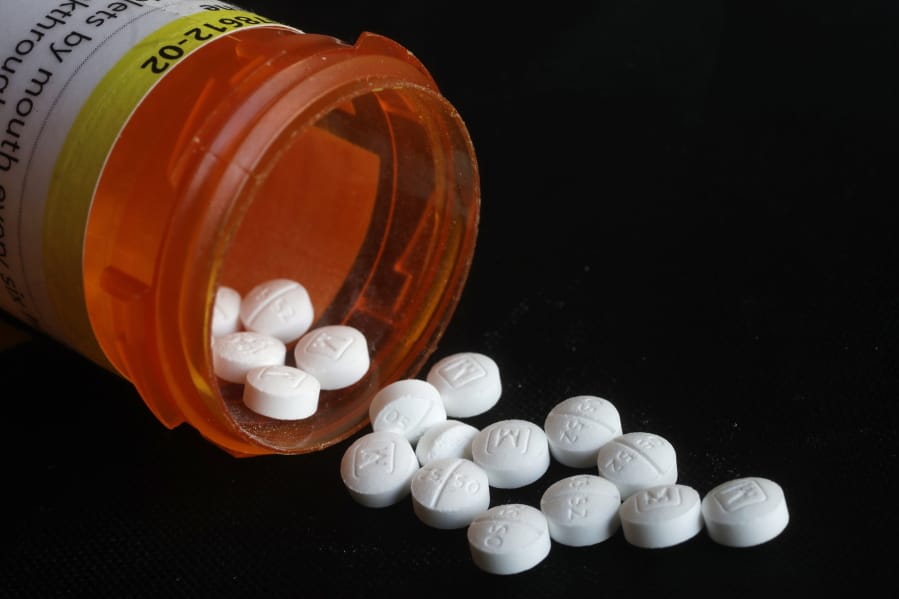WASHINGTON — The maker of OxyContin has been cast as the chief villain in the nation’s opioid crisis. But newly released government figures suggest Purdue Pharma had plenty of help in flooding the U.S. with billions of pills even as overdose deaths were accelerating.
Records kept by the federal Drug Enforcement Administration show that 76 billion oxycodone and hydrocodone pills — the vast majority of them generics, not brand names — were shipped to U.S. pharmacies from 2006 to 2012.
The annual number swelled by more than 50 percent during that period of time even as the body count climbed. The powerful painkillers flowed faster even after Purdue Pharma was fined $635 million for falsely marketing OxyContin as less addictive than other opioids.
“I think the scale of this is stunning,” Keith Humphreys, a Stanford University professor who researches opioids, said in an interview.
He also noted that the data shows that the places that received the most drugs per capita are the ones with the most overdoses per capita: “It really looks like wherever you spread the most gas, you get the most fires.”
At the same time, the data illustrates how complicated it could be for the courts to figure out who should be held accountable for the public health disaster. More than 2,000 state, local and tribal governments have sued members of the drug industry in the biggest and possibly most complicated litigation of its kind ever in the U.S.
Prescription and illegal opioids such as heroin and fentanyl have been factors in more than 430,000 deaths in the U.S. since 2000, according to the CDC. From 2006 to 2012, annual opioid deaths rose from under 18,000 a year to more than 23,000. During that time, prescription drugs were cited as factors in just under half the deaths.
Since then, overall opioid deaths in the U.S. have doubled, though on Wednesday the CDC reported that drug overdose deaths of all kinds probably fell last year for the first time in nearly 30 years.
The newly released information shows in detail the flow of drugs from manufacturers to communities.
West Virginia, Kentucky, Tennessee and Nevada all received more than 50 pills for every man, woman and child each year. Several areas in the Appalachian region were shipped an average of well over 100 pills per person per year.
Nearly every state has filed a lawsuit, and most of them have focused on Purdue and members of the Sackler family, who own the Stamford, Conn.-based company and are major philanthropists whose donations to museums and universities have now come under scrutiny. Many local governments have also sued other drugmakers, distribution companies and pharmacies.
The lawsuits say that with the introduction of OxyContin, a time-released opioid, in 1995, Purdue created a new playbook to push the use of opioids for more patients and in higher doses.
But Purdue points out, accurately, that the company produced only a small fraction of the nation’s opioids — about 3 percent between 2006 and 2012, according to the data. Three companies — SpecGX, Par Pharmaceutical and Activis Pharma — that sold lower-priced generic drugs, including versions of OxyContin, combined to make 90 percent of the pills.
The three companies say that they didn’t market the drugs and were just meeting the demand of prescriptions filled out by doctors — and that they didn’t produce more than the DEA allowed.
Distributors contend they functioned as a delivery service and keep federal authorities apprised of the quantities of drugs being shipped.
Four companies — McKesson Corp., Walgreens, Cardinal Health and AmerisourceBergen — each distributed more than 10 percent of the opioids sent to pharmacies. McKesson distributed more than 18 percent of the nation’s opioids from 2006 to 2012 — the most of any company — but said it didn’t push sales.
“Any suggestion that McKesson influenced the volume of opioids prescribed or consumed in this country would reflect a misunderstanding of our role as a distributor,” a spokeswoman said via email.
Dr. Joshua Sharfstein of Johns Hopkins University said the lack of transparency around the prescribing data probably slowed the federal response to the opioid epidemic.
“To a certain extent, no agency really felt responsible and had access to the data in real-time to see what was happening,” he said.



